Missions

Unparalleled Flight Heritage
More than 50 years of providing mission critical products and services to the most important space missions.
Sun
Deep Space 1

DEEP SPACE 1
October 24, 1998
Deep Space 1 was the first interplanetary spacecraft to use an ion engine, propelling it towards multiple missions, including trips to the asteroid 9969 Braille and comet Borrelly. Even though the mission experienced a few issues, the operation to fix it marks one of the most successful robotic space rescues in the history of space exploration.
Parker Solar Probe

PARKER SOLAR PROBE
August 12, 2018
NASA's Parker Solar Probe is planning to fly more than seven times closer to the Sun’s surface than any other spacecraft and revolutionize our understanding of the Sun. During its 7-year mission, Parker will perform scientific investigations in a hazardous region of intense heat and solar radiation to watch the solar wind speed up from subsonic to supersonic and fly though the birthplace of the highest-energy solar particles.
STEREO
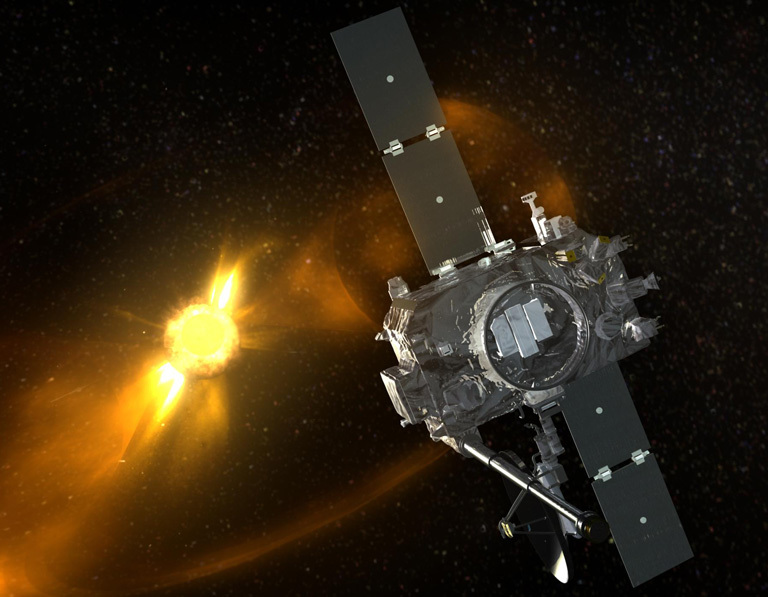
STEREO
Solar Terrestrial Relations Observatory
October 26, 2006
STEREO is composed of two nearly identical observatories -- one ahead of Earth in its orbit, the other trailing behind, and has traced the flow of energy and matter from the Sun to Earth. This mission is key to NASA’s space weather detection efforts and provides more accurate alerts for the arrival time of Earth-directed solar ejections with its unique side-viewing perspective.

Mercury
BepiColombo

BEPICOLOMBO
October 20, 2018
BepiColombo is a joint mission of the European Space Agency (ESA) and the Japan Aerospace Exploration Agency (JAXA) to the planet Mercury. The main objectives of the mission are to study the origin and evolution of a planet close to its parent star, study Mercury's form, interior, structure, geology, composition and craters and investigate Mercury's exosphere, composition and dynamics, including generation and escape.
MESSENGER
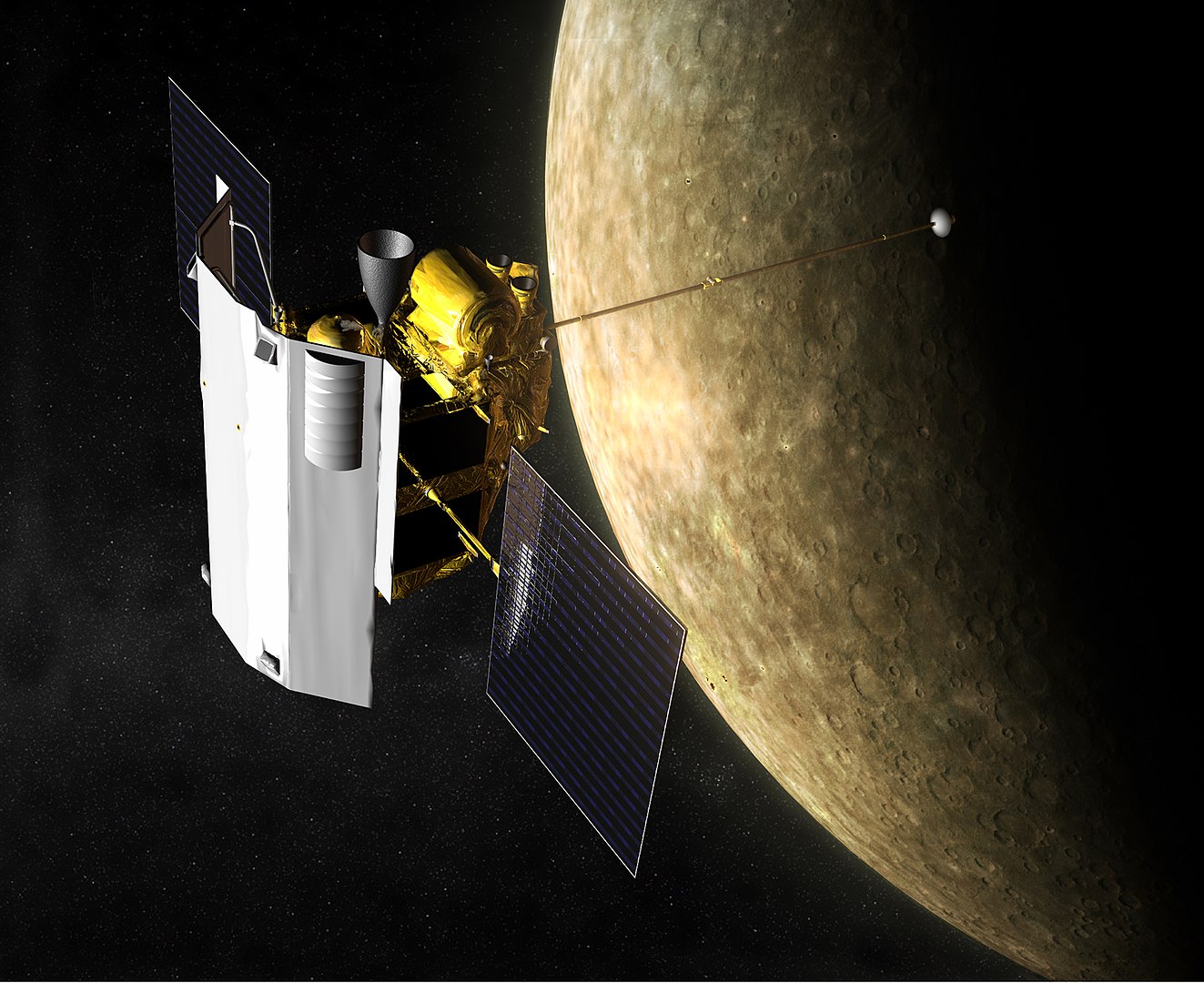
MESSENGER
Mercury Surface, Space Environment,
Geochemistry and Ranging
August 3, 2004
MESSENGER was the seventh Discovery-class mission, and the first spacecraft to orbit Mercury. Its primary goal was to study the geology, magnetic field, and chemical composition of the planet. It was the first mission to Mercury after Mariner 10, more than 30 years before.

Venus
IKAROS

IKAROS
Interplanetary Kite-craft Accelerated
by Radiation Of the Sun
October 20, 2018
IKAROS was a Japan Aerospace Exploration Agency (JAXA) experimental spacecraft, using a solar sailing as the main propulsion on its journey to Venus. Ikaros successfully deployed its 46-foot-wide (14 meters) sail in June 2010 through an innovative method that took advantage of spin and the package slowly unfolded as it spun at about 25 revolutions per minute.
Magellan

Magellan
May 4, 1989
NASA's Magellan mission to Venus was the first spacecraft to image the entire surface of Venus and made several discoveries about the planet. Magellan burned up 10 hours after being commanded to plunge into the Venusian atmosphere, after three en route trajectory corrections.
AKATSUKI

AKATSUKI
Planet C
May 10, 2010
AKATSUKI was a JAXA mission to Venus, with the purpose of clarifying the three-dimensional motion of Venusian atmosphere over time and establish a meteorology of Venus. With the help of this mission, scientists can create a better picture of Venus’ meteorology, and eventually a universal system for planetary meteorology.

Earth
LEO
Geo-Eye

Geo-Eye
September 6, 2008
GeoEye-1 is a high-resolution Earth observation satellite owned by DigitalGlobe. The satellite imagery is used for a variety of purposes, including but not limited to defense, disaster response, mining production and exploration, mapping of remote regions, location-based services, insurance and risk management, and agricultural crop management.
Jason-1
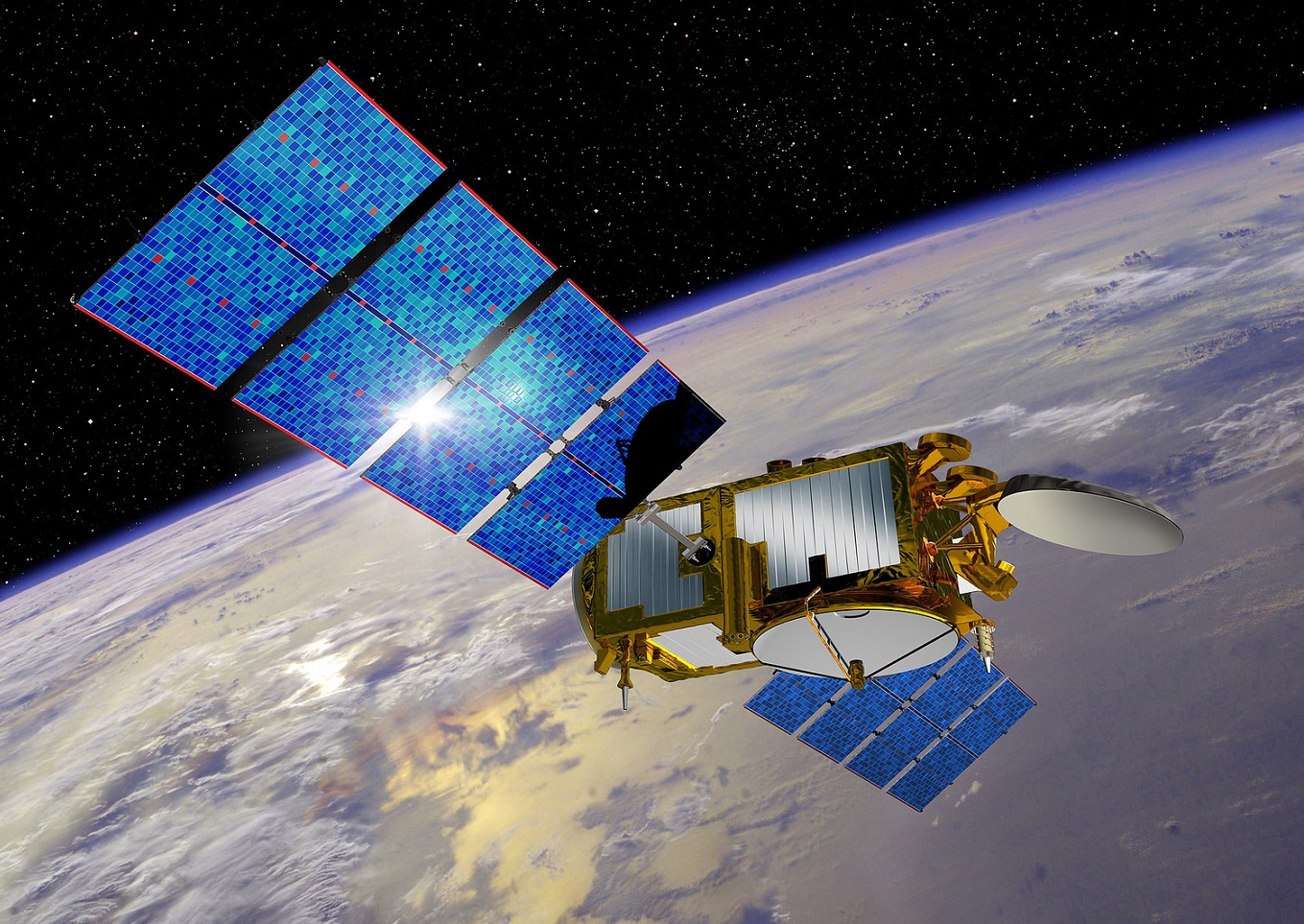
Jason-1
December 7, 2001
Jason-1 was a joint project between the NASA (United States) and CNES (France) space agencies. It was designed to measure climate change through very precise millimeter-per-year measurements of global sea level changes.
RADARSAT

Radarsat
1995-2019
RADARSAT is a Canadian remote sensing Earth observation satellite program overseen by the Canadian Space Agency (CSA).
TRACE

TRACE
Transition Region and Coronal Explorer
1995-2019
TRACE was a satellite mission designed to deepen understanding of our dynamic Sun’s activity, by exploring the connections between fine-scale magnetic fields and the associated grand-scale plasma structures on the Sun.
ISIS

ISIS
International Satellites for Ionospheric Studies
April 1, 1971
ISIS 1 and 2 were the third and fourth in a series of Canadian satellites launched to study the ionosphere over one complete solar cycle. After the success of Canada's Alouette 1, Canada and the United States jointly sent up three more satellites in the ISIS program.
Landsat

Landsat
1978-2021
The Landsat program is the longest-running enterprise for acquisition of satellite imagery of Earth. The satellites have acquired millions of images, which are archived in the United States and at Landsat receiving stations around the world.
SORCE
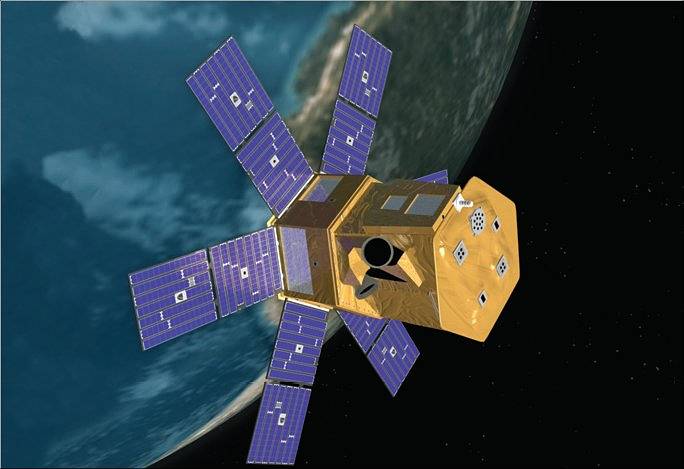
SORCE
The Solar Radiation and Climate Experiment
January 25, 2003
The Solar Radiation and Climate Experiment was a NASA-sponsored satellite mission that is providing state-of-the-art measurements of incoming x-ray, ultraviolet, visible, near-infrared, and total solar radiation. The measurements provided by SORCE were critical to studies of the Sun, its effect on our Earth system, and its influence on humankind.
MEO
GPS

GPS
2010-2016
The Global Positioning System (GPS) is a space-based radionavigation system, owned by the U.S. Government and operated by the United States Air Force. It can pinpoint a three-dimensional position to meter-level accuracy and time to the 10-nanosecond level, worldwide and 24/7, and is crucial for world-wide positioning information.
Van Allen Probes

Van Allen Probes
August 30, 2012
The Van Allen Probes will study two extreme and dynamic regions of space known as the Van Allen Radiation Belts that surround Earth. They will help scientists to understand this region and to better design spacecraft that can survive the rigors of space.
GEO
AEHF

AEHF
Advanced Extremely High Frequency
Six launches between
August 10, 2010 – March 26, 2020
The Advanced Extremely High Frequency (AEHF) system is a series of six military communication satellites and provides vastly improved global, survivable, protected communications capabilities for strategic command and tactical warfighters operating on ground, sea and air platforms. The jam-resistant system also serves international partners including Canada, the Netherlands and the United Kingdom.
SBIRS

SBIRS
Space-Based Infrared System
Eleven satellites carrying SBIRS
as of January 2018
The Space-Based Infrared System (SBIRS) is a US Space Force system intended to meet the United States' infrared space surveillance needs, such as key capabilities in the areas of missile warning, missile defense and battlespace characterization via satellites in geosynchronous Earth orbit (GEO), sensors hosted on satellites in highly elliptical orbit (HEO), and ground-based data processing and control.
SXI

SXI
GOES 12, 13, 14, 15 launches
Solar X-ray Imager (SXI) are full-disc X-ray instruments observing the Sun aboard GOES satellites. The SXI on GOES 12 was the first of its kind and allows the U.S. NOAA to better monitor and predict space weather.
GOES
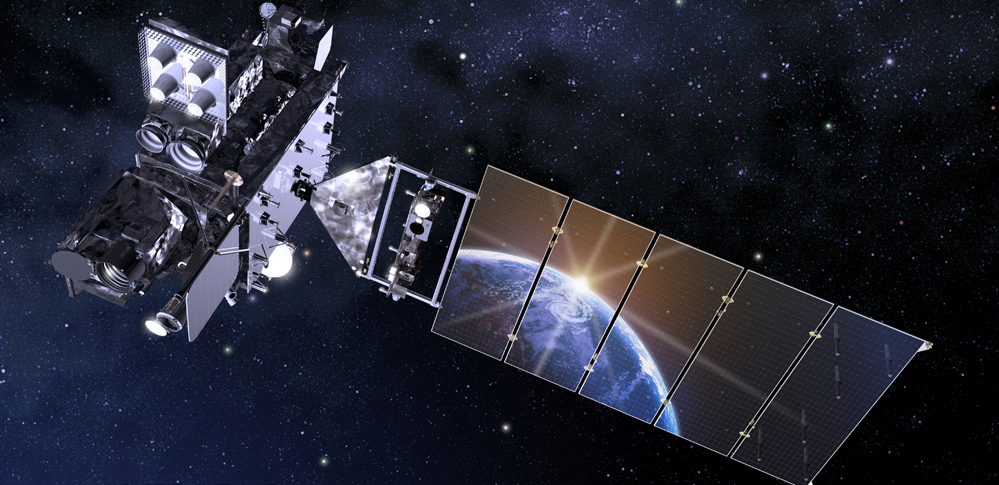
GOES
Geostationary Operational Environmental Satellites
November 19, 2016
The GOES series of satellites are Geostationary satellites that circle the Earth in geosynchronous orbit, which means they orbit the Earth’s equatorial plane at a speed matching the Earth’s rotation. GOES satellites are designated with a letter prior to launch and renamed with a number once they reach geostationary orbit.
SDO

SDO
Solar Dynamics Observatory
February 11, 2010
NASA’s Solar Dynamics Observatory studies how the Sun creates solar activity and drives space weather from the interior to the atmosphere, magnetic field, and energy output. Three scientific experiments on board, Atmospheric Imaging Assembly (AIA), EUV Variability Experiment (EVE), Helioseismic and Magnetic Imager (HMI), perform several measurements to characterize how and why the Sun varies.
Beyond GEO
Chandra

Chandra
July 23, 1999
NASA's Chandra X-ray Observatory is a telescope specially designed to detect X-ray emission from very hot regions of the Universe such as exploded stars, clusters of galaxies, and matter around black holes. The Smithsonian's Astrophysical Observatory in Cambridge, MA, hosts the Chandra X-ray Center which operates the satellite, processes the data, and distributes it to scientists around the world for analysis.
ISTP/SOHO

ISTP/SOHO
International Solar-Terrestrial Physics/SOlar
Heliospheric Observatory
December 2, 1995
Jason-1 was a joint project between the NASA (United States) and CNES (France) space agencies. It was designed to measure climate change through very precise millimeter-per-year measurements of global sea level changes.
ACE

ACE
Advanced Composition Explorer
August 25, 1997
ACE was launched to investigate the matter ejected from the Sun to establish the commonality and interaction between the Sun, Earth and the Milky Way galaxy. It also provides real-time space weather data and advanced warning of geomagnetic storms.
ST5

ST5
Space Technology 5
March 22, 2006
ST5 will flight test its miniaturized satellites and innovative technologies in the harsh environment of Earth's magnetosphere. In orbit, ST5's satellites will map the intensity and direction of magnetic fields within the inner magnetosphere. These measurements will allow us to directly infer the presence of electrical currents carried by energetic charged particles.
MAP

MAP
Microwave Anisotrophy Probe
June 30, 2001
The MAP mission will determine conditions in the early universe by making a full sky map of the cosmic microwave background temperature. Analysis of the new information revealed by the MAP observations will help cosmologists to answer several key questions about the universe.
MMS

MMS
Magnetospheric Multiscale Mission
March 12, 2015
MMS, investigates how the Sun's and Earth's magnetic fields connect and disconnect, explosively transferring energy from one to the other. During its tenure in space, MMS has uncovered details about how magnetic reconnection works on small scales, broken a Guinness World Record for highest altitude fix of a GPS, and opened insights into magnetic reconnection in nuclear and astrophysics.

ISS
International Space Station
3D BioFabrication Facility (BFF)
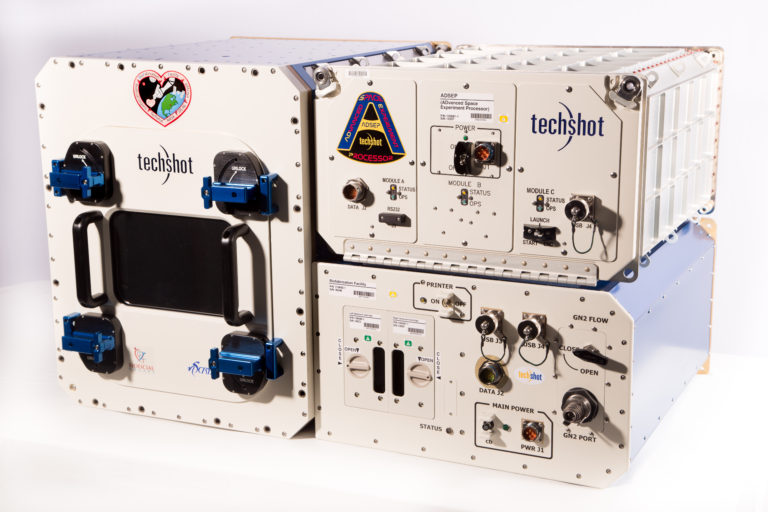
BFF
3D BioFabrication Facility (BFF)
The BioFabrication Facility (BFF) is a 3D biomanufacturing platform capable of printing with live cells (human and animal). The facility contains a Z-tower with multiple print heads and a bioreactor on the X-Y print stage. Once printed, cells are conditioned and matured into tissue in the Redwire ADSEP payload.
Additive Manufacturing Facility (AMF)
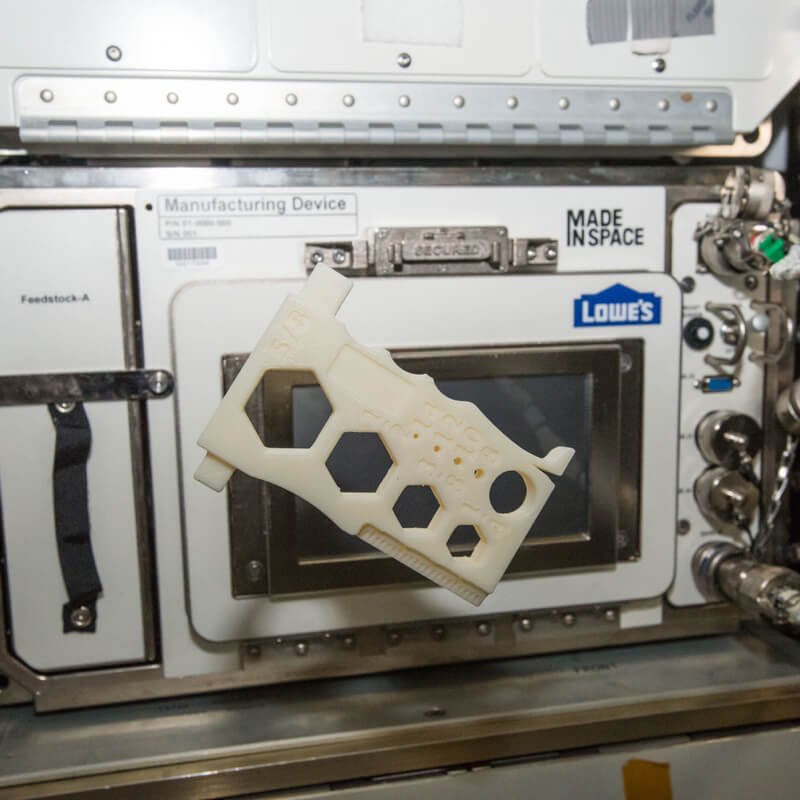
AMF
Additive Manufacturing Facility
The Additive Manufacturing Facility (AMF) is the first permanent commercial manufacturing platform to operate in low Earth orbit. AMF is our flagship technology onboard the ISS and its versatility and durability have made it a reliable resource for government and commercial customers since its activation in 2016. It has produced over 200 tools, assets, and parts in orbit. AMF’s legacy has been the foundation for our technology roadmap and manufacturing programs as Redwire develops new capabilities that will leverage additive manufacturing in space for unprecedented applications.
Advanced Space Experiment Processor (ADSEP)

ADSEP
Advanced Space Experiment Processor
ADSEP is a fully automated, multi-use single middeck locker processing facility used to conduct a variety of life and physical-science research and small-batch production. The ADSEP facility contains three independent thermal zones, each accommodating one “mini-laboratory” cassette, and an internal computer that controls the processing of all three cassettes. Each cassette is designed to provide up to 2-levels of containment for each experiment.
Analytical Containment Transfer Tool (ACT2)

ACT2
Analytical Containment Transfer Tool
The ACT2 is a disposable device that provides two levels of containment and transfers samples in a safe manner from unique experiment-specific spaceflight hardware to on-orbit analytical tools for real-time analysis. ACT2 was designed for a wide variety of research fluid handling applications for materials that only require two levels or less of containment.
Bone Densitometer

BD
Bone Densitometer
The BD measures X-ray absorption by bone and soft tissue and reports bone density in mice. It can quickly also determine soft-tissue density, lean/fat ratio and total animal mass (i.e., weighing mice in space). It is particularly useful for bone loss and muscle wasting studies.
Ceramics Manufacturing Module (CMM)

CMM
Ceramics Manufacturing Module
The Ceramics Manufacturing Module (CMM) is a commercial manufacturing facility that produces ceramic parts in microgravity for terrestrial use.
CMM demonstrates the viability of manufacturing with pre-ceramic resins in an additive stereolithography (SLA) environment, which is a new manufacturing technique for the International Space Station ecosystem.
Fiber Optics

Fiber Optics
Commercial manufacturing of microgravity-enabled optical fiber has enormous potential, both on Earth and for space exploration. The Redwire Fiber Optics miniature fiber-pulling machine harnesses the unique properties of the microgravity environment to produce an optical fiber orders of magnitude better than what can be produced on Earth. In January 2018, the first ZBLAN optical fiber was manufactured on the International Space Station.
Industrial Crystal Facility (ICF)

ICF
Industrial Crystal Facility
The Industrial Crystallization Facility is a commercial in-space manufacturing facility designed to demonstrate microgravity-enhanced techniques for growing inorganic KDP crystals that are commonly used in high-energy laser systems on Earth.
Multi-use Variable-gravity Platform (MVP)

MVP
Multi-use Variable-gravity Platform
Each MVP unit accommodates multiple experiment modules, which provide 2-levels of containment with standardized mechanical and electrical interfaces which may be accessed on orbit or controlled remotely or via a pre-programmed timeline. The MVP offers two independently controlled centrifuges (simultaneously providing 0-2 g each) as well as heating, cooling, humidity control, CO2 scrub, ethylene scrub and video observation (some experiment modules also include a microscope objective).
Passive Orbital Nutrient Delivery System (PONDS)

PONDS
Passive Orbital Nutrient Delivery System
PONDS was developed for flight in NASA’s Vegetable Production System (Veggie) facility by Techshot, with collaboration from Tupperware Brands. It can grow a wide variety of plants in space, and requires far less monitoring and maintenance time from flight crews than other plant growth devices.

Plastic Recycler
The Plastic Recycler is a robust, semi-autonomous manufacturing facility capable of processing polyethylene (PE) raw materials into usable 3D printing filament for the Additive Manufacturing Facility (AMF) aboard ISS. The Recycler will complete the plastic sustainability lifecycle on-orbit by providing astronauts the ability to convert plastic packaging and trash as well as objects previously fabricated by the 3D printer into feedstock to be reused by the printer. It will facilitate the reusability of materials to solve new problems as they arise whether on the International Space Station or in future crewed space exploration missions. The invention will improve the autonomy and sustainability of long-duration space missions, while also helping to reduce the cost and weight of payloads carried from earth.

Turbine SCM
Turbine Superalloy Casting Module
Turbine Superalloy Casting Module (Turbine SCM) tests a commercial in-space manufacturing device that thermally processes superalloy parts in microgravity for future use in items like turbine engines on Earth. Superalloys are metal alloys with excellent heat resistant properties. The researchers expect superalloy parts processed in microgravity to have more homogeneous microstructure, and improved mechanical properties, such as microhardness.

Moon
GRAIL
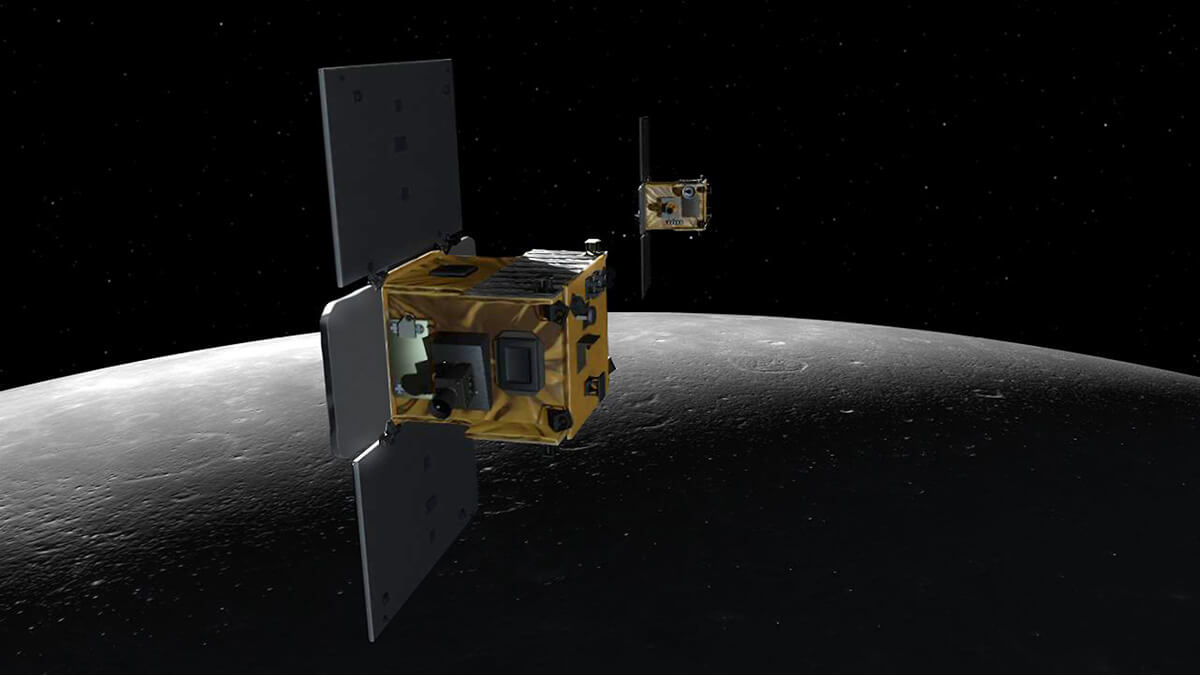
GRAIL
Gravity Recovery and Interior Laboratory
September 12, 2011
NASA's GRAIL mission flew twin spacecraft—Ebb and Flow—in tandem around the Moon to map variations in the lunar gravitational field. The probes generated the highest resolution gravity map of any celestial body to date and were purposely crashed on the Moon at the end of the mission.
Lunar Prospector

Lunar Prospector
January 7, 1998
NASA's Lunar Prospector orbited the Moon to map its surface composition and to look for polar ice. The probe found evidence suggesting water ice at both the lunar poles and detected strong localized magnetic fields, mapped the global distribution of major rock types, and discovered signs of a 370-mile (600-kilometer) diameter, iron-rich core.
LRO

LRO
Lunar Reconnaissance Orbiter
June 18, 2009
The LRO spent its first three years in a low polar orbit collecting detailed information about the moon and its environment and after this initial orbit, the LRO transitioned to a stable elliptical orbit, passing low over the lunar south pole. With a suite of seven powerful instruments, the LRO has collected a treasure trove of data, making an invaluable contribution to our knowledge about the moon.
LCROSS

LCROSS
Lunar Crater Observing and Sensing Satellite
June 18, 2009
LCROSS launched with LRO, with the purpose of looking for water ice at the lunar poles. The LCROSS science payload consisted of two near-infrared spectrometers, a visible light spectrometer, two mid-infrared cameras, two near-infrared cameras, a visible camera and a visible radiometer.

Mars
Mars Exploration Rovers

Mars Exploration Rovers
Spirit and Opportunity
June 5 and June 25, 2003
The Mars Exploration Rovers were made up of the twin geologists, Spirit and Opportunity. They have both found dramatic evidence for past wet conditions that possibly could have supported microbial life.
Mars Global Surveyor

Mars Global Surveyor
November 7, 1996
Mars Global Surveyor became the first successful mission to the red planet in two decades. One of the most exciting observations of the spacecraft's wide-angle camera system, known as the Mars Orbital Camera, is that the red planet has very repeatable weather patterns.
Mars Pathfinder

Mars Pathfinder
December 4, 1996
The Mars Pathfinder mission, designed to demonstrate a low-cost method for delivering a set of science instruments to the Red Planet, was the first wheeled vehicle to be used on any other planet in the solar system and served as the foundation for the Mars rovers of today.
Mars Reconnaissance Orbiter

Mars Reconnaissance Orbiter
Aug 12, 2005
The Mars Reconnaissance Orbiter, or MRO, has studied the planet's atmosphere and terrain from orbit since 2006 and also serves as a key data relay station for other Mars missions, including the Mars Exploration Rover Opportunity. The orbiter carries six instruments for studying every level of Mars from underground layers to the top of the atmosphere.
Mars Science Laboratory
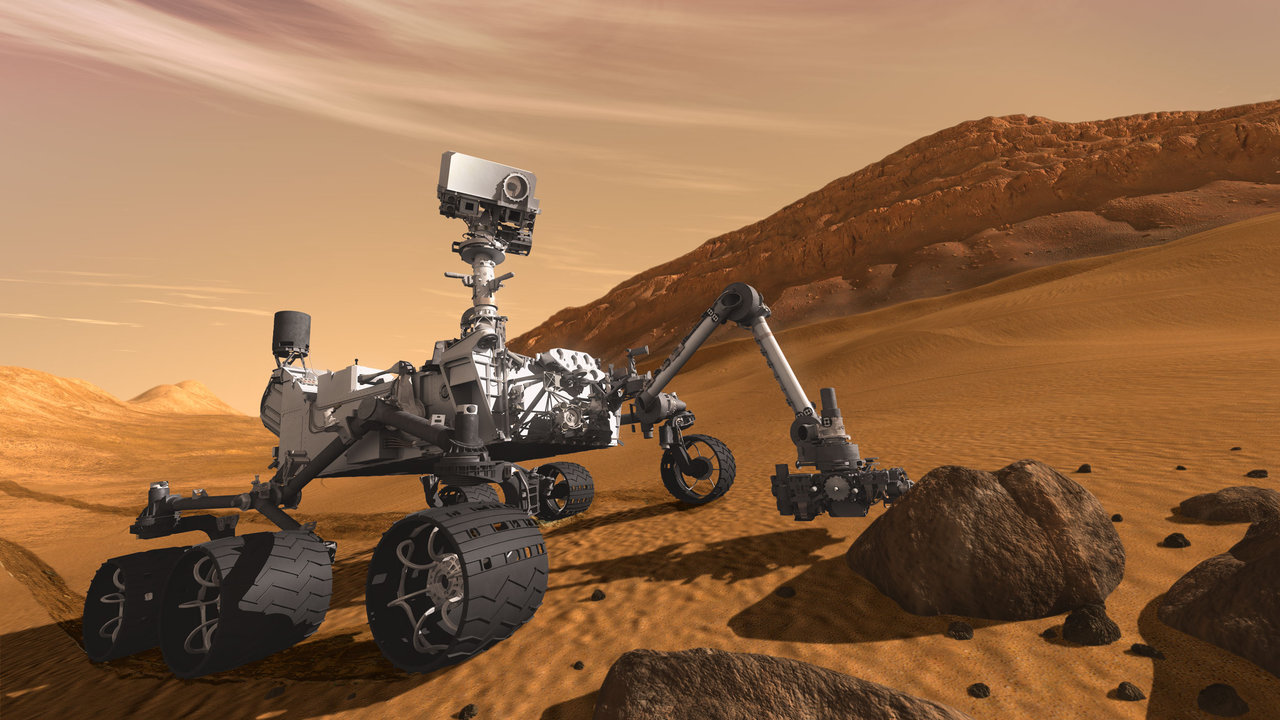
Mars Science Laboratory
November 26, 2011
NASA's Mars Science Laboratory mission included the Curiosity rover, the largest and most capable rover ever sent to Mars. The mission demonstrated the ability to land the very large, heavy rover to the surface of Mars.
MAVEN

MAVEN
Mars Atmosphere and Volatile EvolutioN
November 18, 2013
The MAVEN mission is part of NASA's Mars Scout program, funded by NASA Headquarters and the mission explored the Red Planet’s upper atmosphere, ionosphere and interactions with the sun and solar wind. MAVEN data will be used to determine the role that loss of volatiles from the Mars atmosphere to space has played through time, giving insight into the history of Mars' atmosphere and climate, liquid water, and planetary habitability.
Mars 2020/Perseverance

Mars 2020/Perseverance
July 30, 2020
The MAVEN mission is part of NASA's Mars Scout program, funded by NASA Headquarters and the mission explored the Red Planet’s upper atmosphere, ionosphere and interactions with the sun and solar wind. MAVEN data will be used to determine the role that loss of volatiles from the Mars atmosphere to space has played through time, giving insight into the history of Mars' atmosphere and climate, liquid water, and planetary habitability.

Asteroids
Hayabusa2

Hayabusa2
December 2, 2014
Hayabusa2 is a Japanese mission launched in December 2014 on a six-year mission to study asteroid Ryugu, and to collect samples to bring to Earth for analysis. The spacecraft arrived at the asteroid in June 2018 and deployed two rovers and a small lander onto the surface. Hayabusa2 delivered the asteroid sample to Earth on Dec. 6, 2020 and is now on an extended mission to the asteroid 1998 KY26.
OSIRIS-REx

OSIRIS-REx
Origins, Spectral Interpretation,
Resource Identification,
Security-Regolith Explorer
September 8, 2016
The OSIRIS-REx spacecraft traveled to a near-Earth asteroid, called Bennu and is bringing back a 2.1-ounce sample back to Earth for study. After orbiting Bennu for nearly two years, NASA’s OSIRIS-REx spacecraft successfully made sample collections from the asteroid using a robotic arm.
Stardust

Stardust
February 7, 1999
The primary objective of the Discovery class Stardust mission was to fly by the comet P/Wild 2 and collect samples of dust and volatiles from the coma of the comet. It then returned these samples to Earth for detailed study in 2006.

Jupiter
Galileo

Galileo
October 18, 1989
Galileo orbited Jupiter for almost eight years and made close passes by all its major moons. Its camera and nine other instruments sent back reports that allowed scientists to determine, among other things, that Jupiter’s icy moon Europa probably has a subsurface ocean with more water than the total amount found on Earth.
Juno
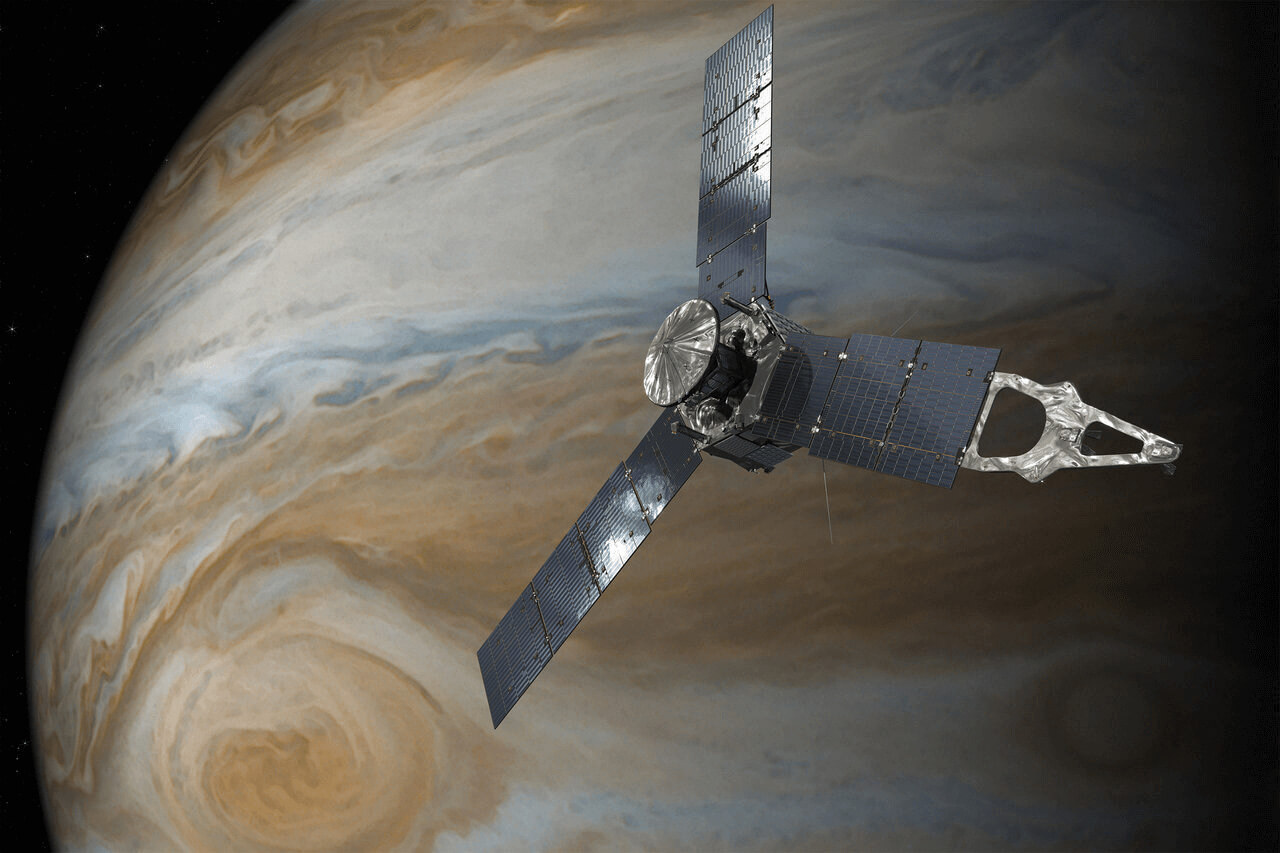
Juno
August 5, 2011
With its suite of science instruments, Juno will investigate the existence of a solid planetary core, map Jupiter's intense magnetic field, measure the amount of water and ammonia in the deep atmosphere, and observe the planet's auroras. The mission will help scientists how giant planets form and the role these titans played in putting together the rest of the solar system.

Saturn
Cassini-Huygens

Cassini-Huygens
October 15, 1997
The Cassini mission, a joint endeavor of NASA, ESA (the European Space Agency), and the Italian space agency (ASI), was a sophisticated robotic spacecraft sent to study Saturn and its complex system of rings and moons in unprecedented detail. Cassini carried a passenger to the Saturn system, the European Huygens probe; the first human-made object to land on a world in the distant outer solar system.


Pluto
New Horizons

New Horizons
January 19, 2006
The New Horizons mission to Pluto flew by the dwarf planet and its moon Charon on its journey, capturing previously unseen images of the surface, before continuing to the Kuiper Belt. The spacecraft's extreme distance from Earth makes it only the fifth to venture so far from home, the others being Pioneer 10 and Pioneer 11, and Voyager 1 and Voyager 2.

Stay Informed.
Subscribe to our newsletter and keep pace with one of the most innovative and fastest growing space companies on and off Earth.